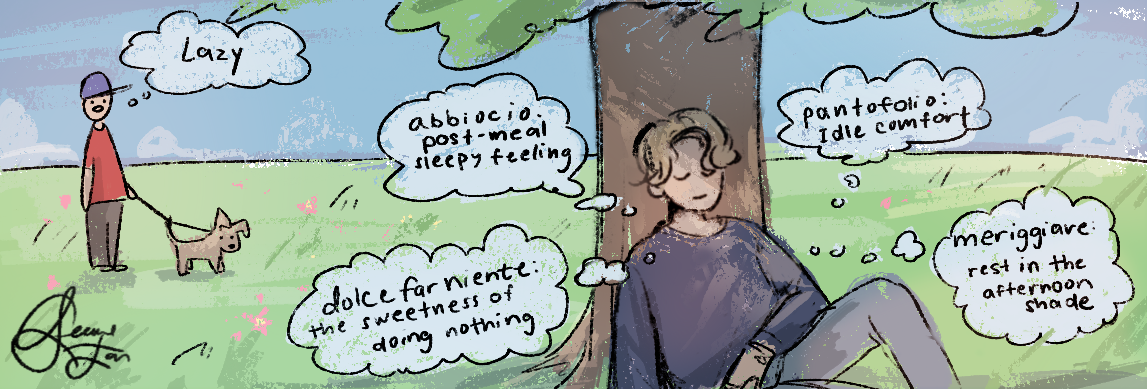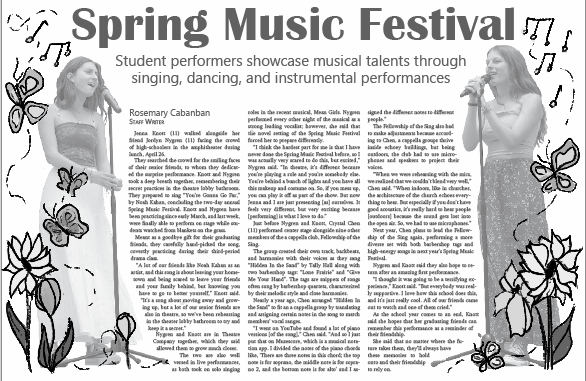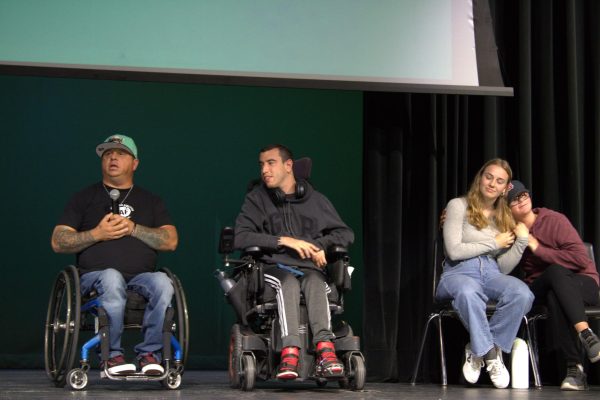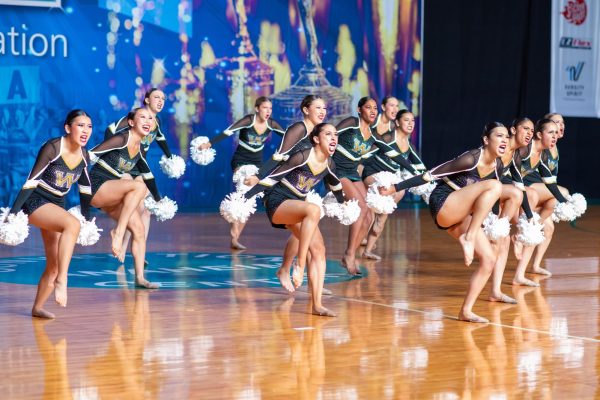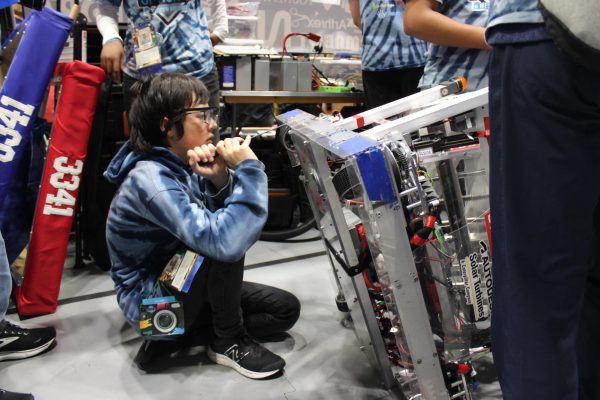Robotics develops new programs in response to virtual environment
September 17, 2020
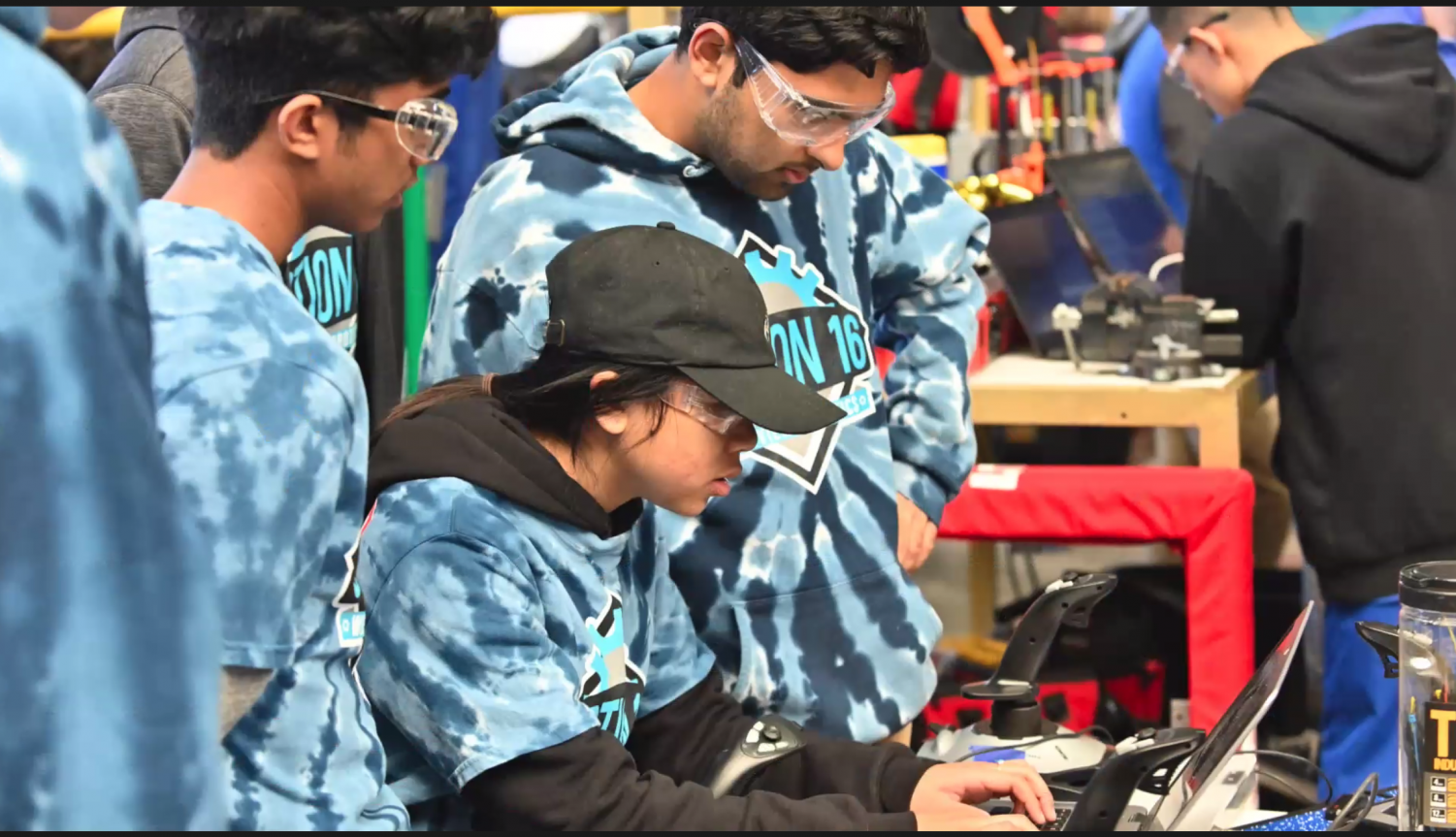
As a 4.5 class and also a highly competitive school club, Westview’s FIRST Robotics Competition (FRC) team, Option 16, has long held the goal of encouraging interest in STEM fields. For just such purposes of spurring enthusiasm, the club has started a new program this year. Classes, led by college-level and professional mentors, set students up for testing and industry-level certification in one of a variety of technical and developmental tools. Photoshop, Autodesk Fusion 360, and Arduino Fundamentals are all options available for students to learn, and the plan was revealed at the club’s recent open house night for new members, alongside a presentation on past achievements and future plans.
“We want [new students] to really enjoy STEM, and realize what it can bring,” President of Option 16 Melody Chu (12) said. “Our goal is to encourage technical and mechanical interest, so that they really care for what they’re doing.”
After the FRC season ends in quarter three of the school year, the team usually devotes time to leadership training and curriculum development, especially in preparing members to teach incoming students. Following that, Option 16 has always used the summer as a prep time for the year to come. This year, in particular, the time between July and September has been crucial for determining the course of the current school year.
“We’ve spent the summer so far restructuring a lot,” Chu said. “Initially, we already had our teaching plans and curriculum set in quarter four, and we were planning on operating on a normal event-organization and pre-competition preparation basis, but now we can’t really do that anymore.”
Such a setback has, however, not disrupted enthusiasm, according to Chu, and steady planning and organization over the past few months have led to more opportunities for team members.
“If anything, people are working a lot harder,” Chu said. “We’re doing our best in order to keep up the same exciting environment for robotics for incoming students, because we never want them to feel like what they’re doing is assigned, or homework.”
A significant portion of the FIRST community guidelines encourages bonding and team-building, and as such enthusiasm and camaraderie between teammates has always been the lifeblood of the team, Chu said. However, in the face of the ban on in-person events that will probably extend until the end of 2020, Option 16 has had to adapt and overcome.
“As much as we’d like to say that it’s still the same over Zoom, since everyone’s just in little boxes on a screen you obviously don’t have the same face-to-face ease,” Chu said. “With one person talking at a time and everyone else muted, it’s harder to develop relationships because people get nervous speaking out loud when all the attention is on them.”
Encouraging student usage of Slack, the normal communication platform for Option 16, has helped members stay in touch, but difficulties remain. While Slack has been the go-to for club leadership announcements, facilitating real connections between veterans and incoming students has been a high order. In order to do so, the team has planned on pushing the inclusion aspect of FRC.
“In our all-hands meetings every Saturday, we try and make sure we include ice-breakers,” Chu said. “We put all of our team members into color groups, and then have them play games and do get-to-know-yous.”
The incorporation of color groups this year in particular has been a solution to both connectivity and also the lack of certainty, Chu said. While the system of breaking up the 80-or-so members of Option 16 is nothing new, splitting up a large number of people into more intimate teams has been especially important. In the face of indecision from FIRST, the group that Option 16 usually competes within, club leadership has come up with an innovative and useful solution.
“Information about the season usually comes in January, so everything’s still up in the air as of right now,” Chu said. “In case we don’t have an actual competition season this year, we’re planning on having the color groups build their own robots to compete in our own mock tournament.”
The commencement of the mock tournament, which has been organized with the technical and mechanical capabilities of color team members in mind, is still not set in stone. But to Option 16, it is a guarantee of the team’s continual improvement and forward momentum, according to Chu.
“It’s nice that we have something to keep working towards,” Chu said. “We are taking things step by step since nothing is really concrete yet and we don’t want to get stuck in a position we can’t back out of, but our goal is to do what’s best for the team as whole.”
Despite the way Option 16 has been split up technically and mechanically, however, the Business side of operations has remained steady. Due to the easy online access to the tools usually used to market and brand team products, Chu envisions an expansion of business operations.
“Honestly, our set-up is really good for virtual,” Chu said. “Everything we have, in terms of presentation as well, can be shared online, and we have everything we need to make this year successful [for Business].”
Finance, too, has been a relatively smooth road for robotics to tread. While company sponsorships have been cut from previous years, the budget for this year has only shrunk by $5,000. Fifteen thousand dollars is still available for organization use, and since school-wide usage of mechanical materials has largely decreased, expenses are projected to be lower. All in all, Chu said she has high hopes for the coming season.
“We’re still unsure about what’s to come,” Chu said. “But we have a pretty good idea of what next year is going to look like, and as with everything else, we’re taking things one step at a time.”



